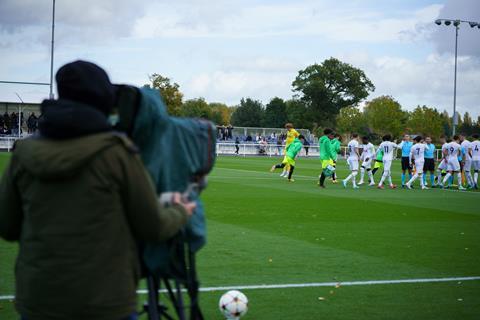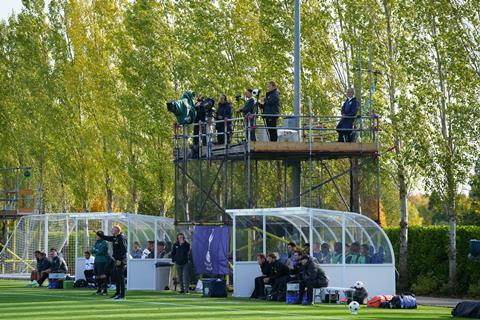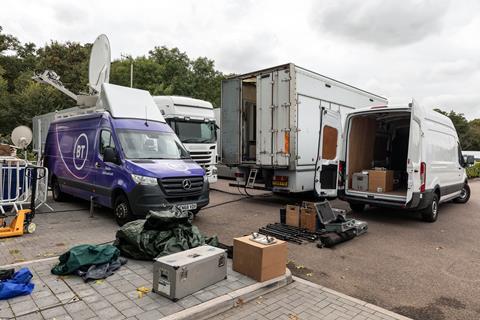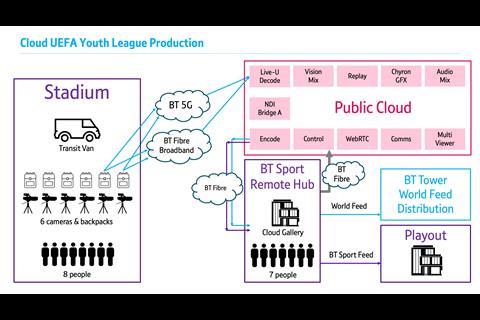Proof of concept aims to cut carbon emissions and free up resources

BT Sport succesfully produced Tottenham v Sporting Lisbon’s UEFA Youth League match in the cloud, the first time that has been done for a UEFA club match.
The game took place on Wednesday, and saw the BT Sport live feed and world feed created with just eight people on site at the Tottenham Hotspur Academy using six cameras with LiveU backpacks and a transit van. This is in comparison to the 24 people who would usually be at the stadium for a traditional broadcast, alongside an OB truck, generator, and satellite truck.
The broadcast was ssent back to the BT Sport remote hub using public cloud, where there were seven people using a cloud gallery with Vizrt’s Vectar. Usually graphics and commentary are added at the remote hub with five people working on the broadcast, which is then sent to the BT Sport and world feed. A video explanation from BT Sport chief engineer Andy Beale can be viewed below.
Using BAFTA’s Albert calculator, 1.23 tonnes of CO2 were emitted from the production, a drop of just over 25% from the 1.65 tonnes emitted from Spurs’ last home game in the Youth League against Eintracht Frankfurt.
It is hoped that this form of production, if put into action more widely, could also free up resources to focus on content innovation and workforce diversity. It allows for more flexible working, and innovations such as BT Sport’s National League highlights in 2019/20 - which were only viable due to the use of remote production.
Head of BT Sport Jamie Hindhaugh said: “It’s about reallocating resources and looking at further opportunities around content creation, all delivered in a greener, cleaner way. Adding that element of creativity and enhancing the product, which has to be our ultimate goal.
“It opens up a multitude of different ways of doing things…but the key thing is we’ve got to learn what cloud tools can really do, what are they like in the midst of live action, and UEFA supporting us and allowing us to do this was an incredible opportunity.”

Beale added on the differences between this cloud system and the traditional production: “If you take the operational layer, a real key objective here is that they shouldn’t really be able to tell the difference. They’re sitting in a gallery in Stratford, and it shouldn’t feel any different to sitting in a traditional gallery. We don’t want to compromise the production in any way, and I believe that’s the case.”

He continued: “The learning here for us is two things, upskilling our engineering workforce to understand cloud systems and putting them through training courses so we can properly support this infrastructure, and secondly how to orchestrate it. One of the really exciting things about cloud systems is you can automate a lot of the onboarding and offboarding of those systems, which can make it quicker and save money.
“We can make more use of this and duplicate it if we know how to build it - for example instead of just picking one game, we could do two and have the same crew could do two different kick off times. Lots of opportunities come up once we take these lessons forward.”






No comments yet